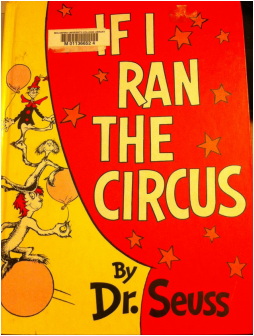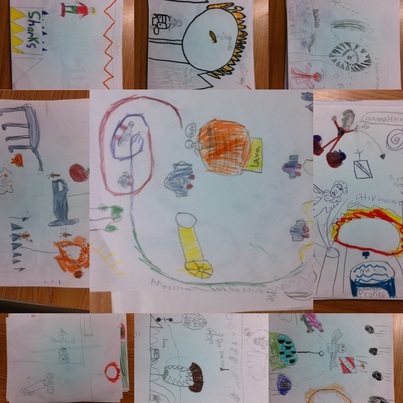
If I Ran the Circus...
10/13/2015
Building Community, Circus Style
At Vesta Education we do more than teach circus; we integrate active living and fun into the BC School Curricula. This lesson plan combines Language Arts and Arts curricula was implemented with Grade 3s (8 years old). It is based on the book If I ran the Circus... By Dr. Seuss
This lesson is adaptable to all lower elementary grades and demonstrates community building, while exploring the Community of Learners theme. It can easily be broken into smaller segments and used as a week long unit for younger children. I have included both the Arts and the Language Arts Grade 3 Curricula tie ins.
Developed 3rd Oct 2015
CONNECT:
Rationale:
Lesson can be used as introduction or supplemental to larger ‘Circus’ unit.
Resources:
Book: If I ran the Circus, by Dr. Seuss (1956)
Drawing supplies, Writing supplies
poster board or wall space
Still interested? Click Read More!
Learning Intentions
BC Provincial Curriculum
Core Competencies:
LESSON PLAN:
PROCESS:
LESSON DELIVERY/PACING/ CLASSROOM MANAGEMENT
Facilitated Discussion:
Who has been to the circus? What acts do you see in a circus?
As you know, I RUN a circus. But today, we are going to go on a trip to a circus in our fantastic imaginations!
Gather to reading area (Library, carpet, etc)
Read the book, “IF I RAN THE CIRCUS”. skip some pages that do not reference Mr. Sneelock. Note: rhyming words, silly words.
Story elements (Introduction, story development, climax, conclusion)
Facilitated Discussion:
What did you think of that circus? Where they REAL acts? That’s the great thing about books- we can use our imagination to have ANYTHING we want to happen!
Now that we’ve read the book, start to think about what you would have in YOUR circus. What if YOU ran a circus? The act can be anything you think people would like to see.
Work with a group of 4 (approx) and take turns telling each other about your FAVOURITE act. My circus is called Vesta. What was the name of the circus in the story?
What is the Name of your Circus? Work together to decide on a NAME.
Activity:
It’s time to draw your FAVOURITE circus act from your group’s circus.
Distribute paper/materials.
We will be putting these individual acts up on the board to create the Grade ⅔ circus!
Once you are finished, please bring your picture to me. Make sure your NAME and the name of your CIRCUS is on the back. Tidy up your workspace and then you may quietly do centers.
GRADE 3 (or late grade 2): On a new piece of paper, (or in your books), write a few sentences/paragraphs describing your act. What is happening?
Who would like to come up and show their picture, and explain what is happening to the class?
REPRESENT:
DIFFERENTIATION: Children represent their work in various ways. Drawing, writing and speaking.
Working in groups to create a poster or a short story
TRANSFORM:
ASSESSMENT:
Final product will be a co-created collage of circus acts, or a co-created story (visual representations of imagination- art or written)
This can be used to base a basic SCRIPT for a dramatic presentation (Circus show).
A bulletin board can be created with the children's drawings "Our Circus Community" or the name of the circus the class picks.
- I can use my imagination to contribute to a larger story
- I can listen, reflect, imagine, and create my own ideas.
- I can communicate my ideas in different ways- by drawing, writing and talking
BC Provincial Curriculum
Core Competencies:
- Communication, Thinking, Personal/social
- Creative experiences involve an interplay between exploration, inquiry, and purposeful choice.
- The arts connect our experiences to the experiences of others.
- Create artistic works collaboratively and as an individual, using ideas inspired by imagination, inquiry, experimentation, and purposeful play
- Explore identity, place, culture, and belonging through arts experiences
- Explore relationships among cultures, communities, and the arts
- Refine ideas, processes, and technical skills in a variety of art forms
- Reflect on creative processes and make connections to personal experiences
- Connect knowledge and skills from other areas of learning in planning, creating, and interpreting works for art
- Interpret and communicate ideas using symbolism in the arts
- Express feelings, ideas, and experiences in creative ways
- Experience, document, perform, and share creative works in a variety of ways
- Language and stories can be a source of creativity and joy.
- Stories help us learn about ourselves, our families, and our communities.
- Everyone can be a reader and a writer.
- Listening and speaking helps us to explore, share, and develop our ideas.
- Using language in creative and playful ways helps us understand how language works.
- Readers use strategies to make sense of what they read, hear, and view.
- Use play and other creative means to discover foundational concepts of print, oral, and visual texts
- Begin to use sources of information and prior knowledge to make meaning
- Use age-appropriate reading, listening, and viewing behaviours and strategies to make meaning from texts
- Engage actively as listeners, viewers, and readers, as appropriate, to develop understanding of self, identity, and community
- Use personal experience and knowledge to connect to text and make meaning
- Recognize the importance of story in personal, family, and community identity
- Recognize the structure and elements of story
- Recognize how different text structures reflect different purposes.
- Exchange ideas and perspectives to build shared understanding
- Create stories and other age-appropriate texts to deepen awareness of self, family, and community
- Plan and create a variety of communication forms for different purposes and audiences
- Communicate in print, using letters and words and basic conventions of English spelling, grammar, and punctuation
LESSON PLAN:
PROCESS:
LESSON DELIVERY/PACING/ CLASSROOM MANAGEMENT
Facilitated Discussion:
Who has been to the circus? What acts do you see in a circus?
As you know, I RUN a circus. But today, we are going to go on a trip to a circus in our fantastic imaginations!
Gather to reading area (Library, carpet, etc)
Read the book, “IF I RAN THE CIRCUS”. skip some pages that do not reference Mr. Sneelock. Note: rhyming words, silly words.
Story elements (Introduction, story development, climax, conclusion)
Facilitated Discussion:
What did you think of that circus? Where they REAL acts? That’s the great thing about books- we can use our imagination to have ANYTHING we want to happen!
Now that we’ve read the book, start to think about what you would have in YOUR circus. What if YOU ran a circus? The act can be anything you think people would like to see.
Work with a group of 4 (approx) and take turns telling each other about your FAVOURITE act. My circus is called Vesta. What was the name of the circus in the story?
What is the Name of your Circus? Work together to decide on a NAME.
Activity:
It’s time to draw your FAVOURITE circus act from your group’s circus.
Distribute paper/materials.
We will be putting these individual acts up on the board to create the Grade ⅔ circus!
Once you are finished, please bring your picture to me. Make sure your NAME and the name of your CIRCUS is on the back. Tidy up your workspace and then you may quietly do centers.
GRADE 3 (or late grade 2): On a new piece of paper, (or in your books), write a few sentences/paragraphs describing your act. What is happening?
Who would like to come up and show their picture, and explain what is happening to the class?
REPRESENT:
DIFFERENTIATION: Children represent their work in various ways. Drawing, writing and speaking.
Working in groups to create a poster or a short story
TRANSFORM:
ASSESSMENT:
Final product will be a co-created collage of circus acts, or a co-created story (visual representations of imagination- art or written)
This can be used to base a basic SCRIPT for a dramatic presentation (Circus show).
A bulletin board can be created with the children's drawings "Our Circus Community" or the name of the circus the class picks.

 RSS Feed
RSS Feed
